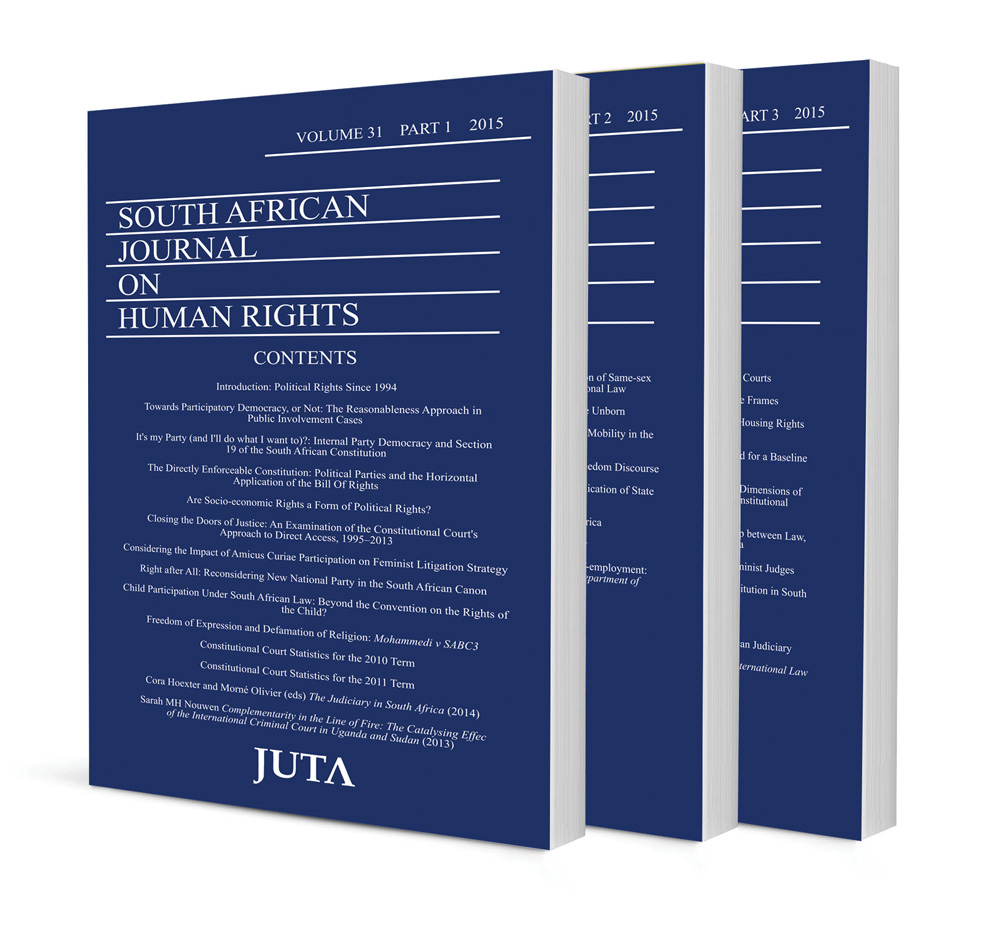Political rights since 1994 Focus: Towards participatory democracy, or not: The reasonableness approach in public involvement cases

Political rights since 1994 Focus: Towards participatory democracy, or not: The reasonableness approach in public involvement cases
Authors Ngwako Raboshakga
ISSN: 1996-2126
Affiliations: Researcher at the South African Institute for Advanced Constitutional, Public, Human Rights and International Law (SAIFAC), a centre of the University of Johannesburg
Source: South African Journal on Human Rights, Volume 31 Issue 1, 2015, p. 4 – 29
Abstract
Sections 59(1)(a), 72(1)(a) and 118(1)(a) of the Constitution require the national and provincial legislative bodies to facilitate public involvement in their legislative and other processes. This article considers the jurisprudence developed by the Constitutional Court thus far in the five cases concerning the facilitation of public involvement in legislative decision-making processes. The court adopted a reasonableness standard of review for purposes of determining whether, in each case, the constitutional obligation to facilitate public involvement has been met. Drawing on literature and a comparison with work in the field of socio-economic rights, I argue that to be meaningful and effective, a reasonableness enquiry requires a substantive engagement with the purposes underlying the relevant provision[s] in the Constitution. In the first two public involvement cases, I contend that the court’s development of the reasonableness enquiry was promising, as it sought to engage substantively with the understanding of democracy that is envisaged in the Constitution. The court developed an approach to the use of reasonableness, as a standard of review, in a manner that achieves participatory democracy, as an element of South Africa’s deep vision of democracy envisaged in the Constitution. However, unfortunately, the last three public involvement cases tend to show the court as working with a compliance- or process-oriented reasonableness enquiry. The court here evinces a weak engagement with the purposes and values which the constitutional obligation to facilitate public involvement seeks to achieve. I argue that, for the future development of jurisprudence and our constitutional democracy, the court should revert to its earlier coherent and constitutionally principled approach.